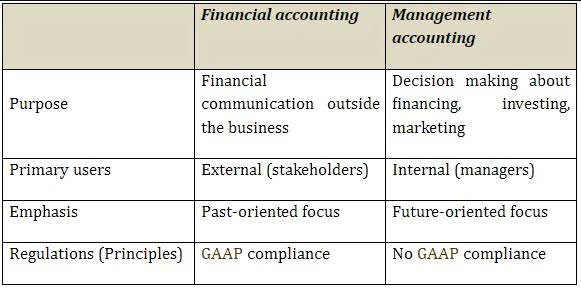It is calculated by dividing the contribution margin (sales revenue minus variable costs) by total sales revenue. Expressed as a percentage, it provides a clear view of product or service profitability. While contribution margin is expressed in a dollar amount, the contribution margin ratio is the value of a company’s sales minus its variable costs, expressed as a percentage of sales. However, the contribution margin ratio won’t paint a complete picture of overall product or company profitability. The focus may be on a single product or on a sales mix of two or more different products.
- The formula to calculate the contribution margin is equal to revenue minus variable costs.
- This insight helps businesses set realistic sales targets and evaluate how changes in costs or strategies impact profitability.
- Not to mention when there are outside factors that affect a business’s costs, such as supply chain issues or economic health.
- Whereas, your net profit may change with the change in the level of output.
- This café owner has a higher contribution margin from selling coffee, but the muffin sales are much more profitable (83% vs 60%).
- One of the most important metrics for measuring the profitability and efficiency of a business is the margin ratio.
How do you calculate the contribution margin?
As you can see, the net profit has increased from $1.50 to $6.50 when the packets sold increased from 1000 to 2000. However, the contribution margin for selling 2000 packets of whole wheat bread would be as follows. This metric is typically used to calculate the break even point of a production process and set the pricing of a product. They also use this to forecast the profits of the budgeted production numbers after the prices have been set. Running a shift-based business is a constant juggle, and it’s hard to know what’s working and what isn’t when you’re busy with daily operations.
AccountingTools
- Consider the following contribution margin income statement of XYZ private Ltd. in which sales revenues, variable expenses, and contribution margin are expressed as percentage of sales.
- However, an ideal contribution margin analysis will cover both fixed and variable cost and help the business calculate the breakeven.
- This leftover amount “contributes” to covering fixed costs and, ultimately, to the company’s profit.
- The sales volume is the number of units or quantity of products or services that you sell.
In 2022, the product generated $1 billion in revenue, with 20 million units sold, alongside $400 million in variable costs. Understanding contribution margin is an important element of evaluating the profitability of the products in your business. Whether you employ the services of a professional accountant or use an online calculator to work out your company’s contribution margin ratio, you must have the right information. Similarly, we saw that with a weighted average margin of 33.33%, the company would need to make $1.2 million in sales to receive a gross profit of $100,000.
Contribution Margin: What it is and How to Calculate it
Therefore, you need to balance these factors according to your business goals and risk appetite. We will see how the contribution margin ratio can help us determine the required sales level to achieve a desired profit. We will also see how to calculate the degree of operating leverage, which is the ratio of contribution margin to operating income and measures how sensitive the profit is to changes in sales.
The profitability of our company likely benefited from the increased contribution margin per product, as the contribution margin per dollar increased from $0.60 to $0.68. On the other hand, the gross margin metric is a profitability measure that is inclusive of all products and services offered by the company. The analysis of the contribution margin facilitates a more in-depth, granular understanding of a company’s unit economics (and cost structure). The best contribution margin is 100%, so the closer the contribution margin is to 100%, the better. The higher the number, the better a company is at covering its overhead costs Bakery Accounting with money on hand. Very low or negative contribution margin values indicate economically nonviable products whose manufacturing and sales eat up a large portion of the revenues.
- And the quickest way to make the needed changes is to use a scheduling and labor management tool like Sling.
- The contribution margin helps to easily calculate the amount of revenues left over to cover fixed costs and earn profit.
- Variable expenses directly depend upon the quantity of products produced by your company.
- Variable cost refers to the cost a business has to pay to produce or sell one unit of an item.
- Let us suppose a company green Star produces 4 different products with the following data.
- On the other hand, net sales revenue refers to the total receipts from the sale of goods and services after deducting sales return and allowances.
Calculate Total Variable Cost
Knowing how to calculate the contribution margin is an invaluable skill for managers, as using it allows for the easy computation of break-evens and target income sales. This, in turn, can help people make better decisions regarding product & service pricing, product lines, and sales commissions or bonuses. For a quick example to illustrate the concept, suppose there is an e-commerce retailer selling t-shirts online for $25.00 with variable costs of $10.00 per unit. The contribution margin (CM) is the profit generated once variable costs have been deducted from revenue.
What Is the Contribution Margin Ratio Formula and How Is It Used?
With a contribution margin of $200,000, the company is making enough money to cover its fixed costs of $160,000, with $40,000 left over in profit. To convert the contribution margin into the contribution margin ratio, we’ll divide the contribution margin by the sales revenue. If the total contribution margin earned in a period exceeds the fixed costs for that period, the business will make a profit. If the total contribution margin is less than the fixed costs, the business will show a loss.
Using this contribution margin format makes it easy to see the impact of changing sales volume on operating income. Fixed costs remained unchanged; however, as more units are produced and sold, more of the per-unit sales price is available to contribute to the company’s net income. Variable costs are not typically reported on general purpose financial statements as a separate category. Thus, you will need to scan the income statement for variable costs and tally the list. Some companies do issue contribution margin income statements that split variable and fixed costs, but this isn’t contribution margin ratio common.
Accurate reporting of these costs ensures compliance with accounting standards like GAAP or IFRS. Dobson Books Company sells textbook sets to primary and high schools. In the past year, he sold $200,000 worth of textbook sets that had a total variable cost of $80,000. Thus, Dobson Books Company suffered a loss of $30,000 during the previous year. It is important for you to understand the contribution margin concept of contribution margin. This is because the contribution margin ratio indicates the extent to which your business can cover its fixed costs.



